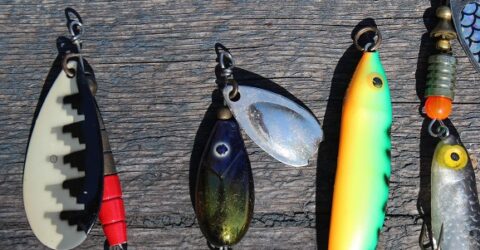Tips for avoiding clickbait
Avoiding clickbait will give you a far more enjoyable online experience, away from low-grade content and tracking websites

The internet has given us many splendid things, from crowdfunding and video calling to search engines and multiplayer online gaming.
Unfortunately, it’s also given us many unwelcome things, from trolls and revenge porn to spam and malware.
While clickbait isn’t as damaging and disruptive as any of the threats in the previous sentence, it’s an irritant that diminishes journalism and panders to behavioural addiction.
It represents some of the worst standards of written content on the internet – misleading, sensationalist and cobbled together hurriedly to generate advertising revenue.
What is clickbait?
The word ‘clickbait’ combines the act of clicking an inbound link to a third-party website with the concept of a hook being baited, ready to catch unwary prey.
Clickbait can be defined as content primarily designed to pique people’s attention, with the aim of driving them to a specific webpage.
It usually involves a hyperbolic headline and an accompanying image that’s either a close-up crop of a wider image or a photo of a celebrity – ideally a female one in skimpy attire.
The headlines will be along the lines of “The photographer couldn’t believe what happened next”, or “This simple trick is guaranteed to help you lose weight”.
Capital letters and exclamation marks are strewn round like confetti, while words like ‘urgent’ and ‘now’ are also routinely deployed in these teaser ads.
Where do you find clickbait?
It usually appears towards the bottom of webpages containing higher-quality content.
Groups of clickbait articles will be advertised below discreet straplines like “You may also like” or “Read related stories”.
Unless the website you’re visiting is paywalled, there’s a good chance clickbait will sit directly below either the main article on that page or the readers’ comments section.
Facebook in particular is awash with it, which is another good reason to delete your social media accounts.
Clickbait can take the form of video content or photo slideshows, though conventional written webpage content is its most common incarnation.
Clicking a URL generally whisks you to a low-quality website with a title like omgwow.biz.
BuzzFeed and Mashable were among the few high-profile proprietors of clickbait content, but their collapse has depleted the number of mainstream platforms centred on junk articles.
What’s the purpose of all this?
Clickbait is a marketing technique which advertises low-quality online content in an attempt to encourage the gullible and easily entertained to visit third-party websites.
These sites exist as traffic farms. They live or die by the numbers of visitors they receive and the number of page views recorded, so they adopt extreme strategies to attract visitors.
Headlines like “X people who died last year” routinely appear beside a photo of a celebrity who’s very much alive.
Clickbait content is promoted by third-party firms on more reputable websites to infer greater credibility, driving traffic away from those sites while paying a fee to the host site for each click.
It wouldn’t be fair to categorise the entire industry as peddling fake news, but some of it is deliberately deceitful, and most of it is effectively garbage.
It will almost certainly be disappointing, but by this stage, you’ve given the company behind it the additional site traffic they were aiming for.
Kick against the clicks
These are our tips for avoiding clickbait:






